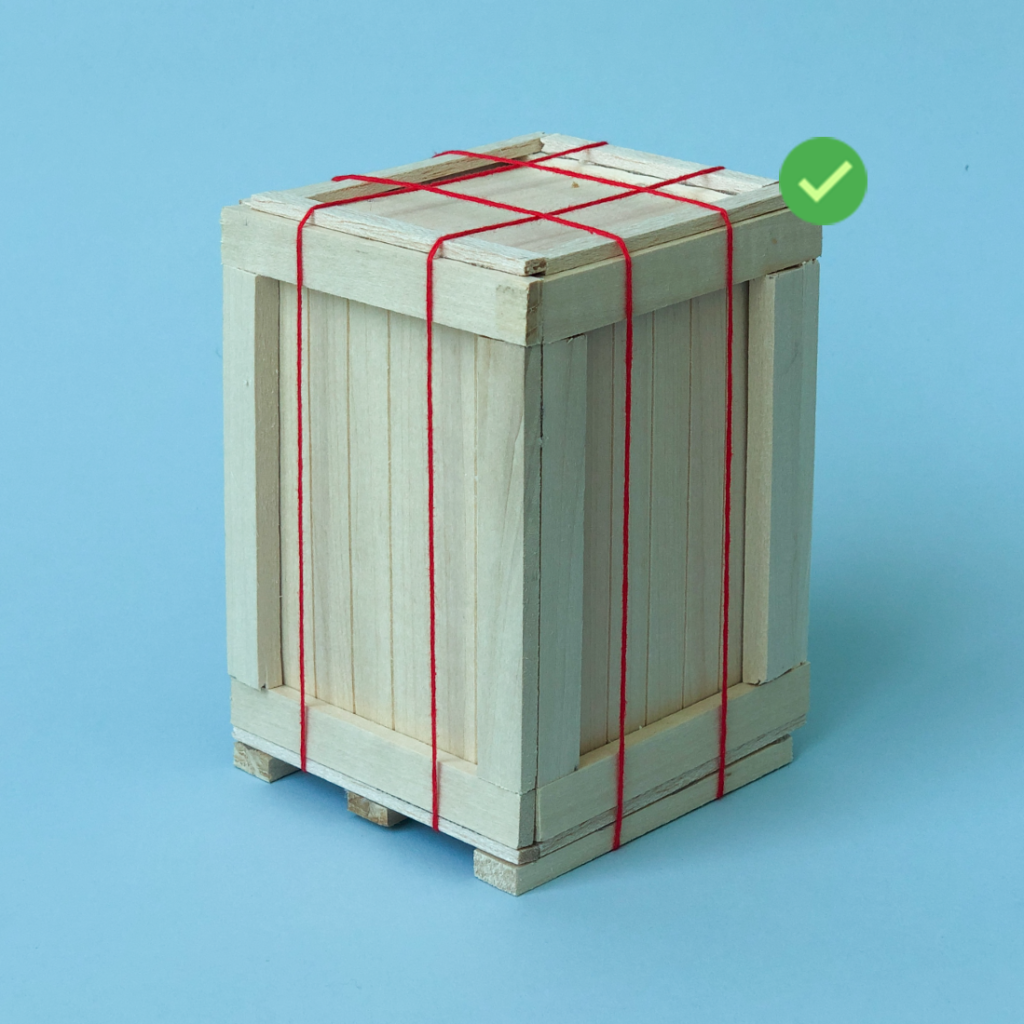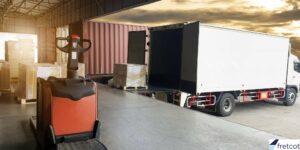The right Packing for the right packaging.
fretcot makes it easy to quote air and ocean international shipping costs in a wink.
However, when you are ready to ship, it is important to understand the handling requirement that you should consider when packing your items.
How to find the right packing for your international shipping?
This packing essential guide will help you to choose the right packing for the right packaging.
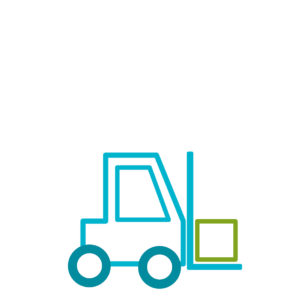
Forklift-able
over 50Kgs
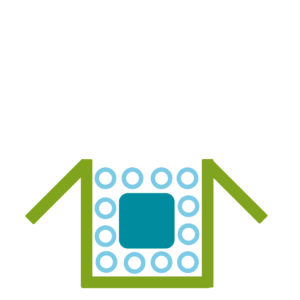
Box it

Stackable

No tilting
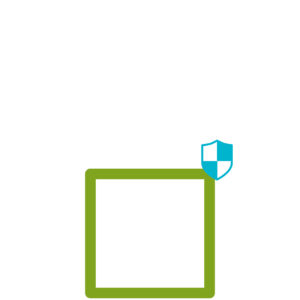
Compliant
- PACKING
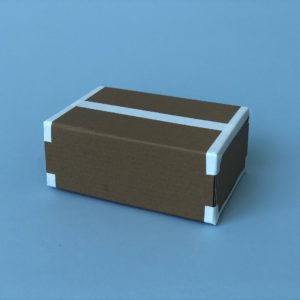

Box it
For shipment < 65 Lbs. Use 2 to 3 inches of cushioning. We recommend using the box-in-the-box method for Fragile items. Above all, your tape should look like an H.
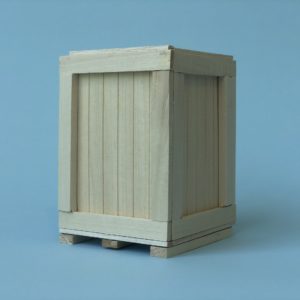
Crate it
Heavier/Larger items. For example, use this method for industrial equipment. Also, we recommend using screws instead of nails. Most importantly, always build the crate with fumigated wood.
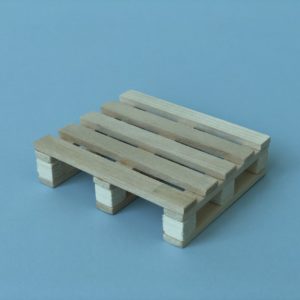
Palletize it
Bulk shipping, Heavy Boxes > 65 Lbs. Always use standard forklift-able pallets. Length and width must be less than 120 inches. Most importantly, only use fumigated pallets or plastic pallets.
2.STACKING
Column stack
A good way to maintain strength and protect against compression
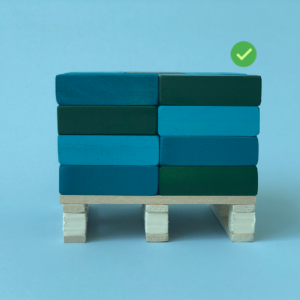

Interlocking stack
Gives better strength when goods inside the box are rigid
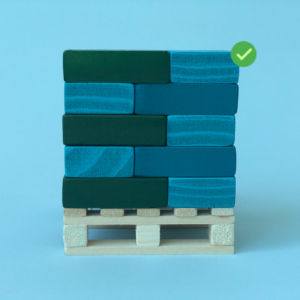

Overhang stack
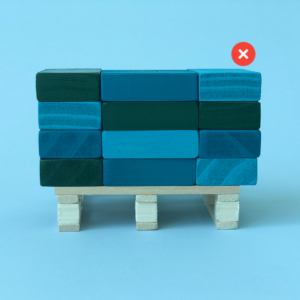

Expose the goods to damage during normal handling. So, it reduces boxes’ strength. Therefore, it may be subject to additional surcharges.
Pyramid stack
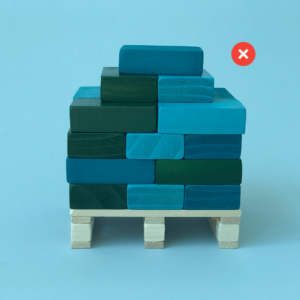

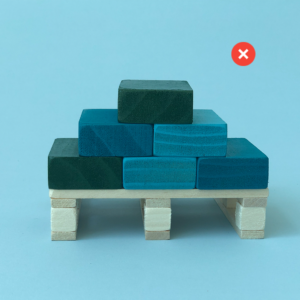

Exposes goods to damages. As a result, you risk paying additional surcharges as the cargo is not stackable. For example, ship excess in loose pieces or use empty boxes to complete the pallet.
3.PROTECTING & SECURING
Paperboards
Protective barrier. You can place it on the top or the sides to spread the weight if necessary.
Shrinkwrap
Wrap freight tightly to prevent load shifting and wet damage.
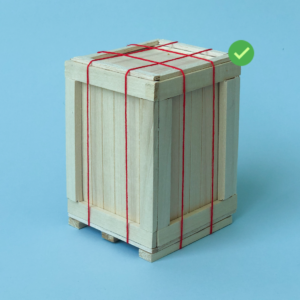
Strapping
Apply 2 straps on each side. the top should have 4 crosses.
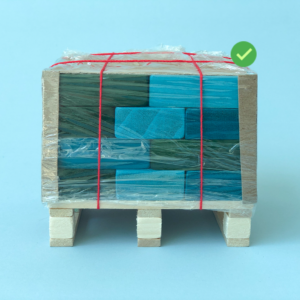
Edge protector
Protect edges of the boxes to stabilize the load if necessary.
Cushioning
Stabilize shipment using; foam, bubble wrap, airbags, peanuts/pellets. Use the box in the box method.
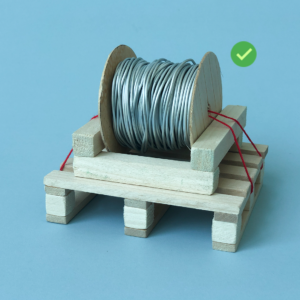

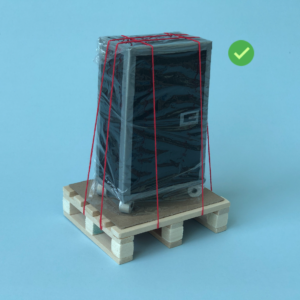


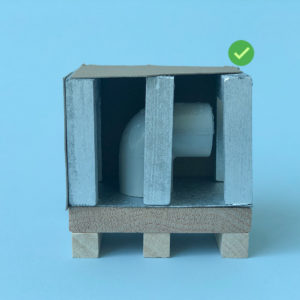


Wood blocking
Use blocking material such as fumigated wood to prevent any movement. Secure with bolts.
Bracing
Ensure that you brace the goods against the pallet. Therefore you will avoid sideways movement. For example, it’s perfect for Engines, outsized pieces, or Cable reels.
4. LABELS
Clearly apply shipment labels on the side of your package with the shipper and consignee.
Place a copy of the label inside the package with the shipper and consignee recipient. For example, you can also write the details on the inner flap. Therefore, if your label is lost your shipment can still be delivered.
But, if you are reusing the box, make sure to remove the old labels.
5.LIQUIDS
Liquids must be in leak-free containers and protected with strong internal material.
Most importantly, drain machines and engines from liquids.
Vehicles’ gas tanks must be run down to a quarter or eighth full.
⇒Check the dangerous good section.
⇒Check the drum packing guideline.
6.FUMIGATION
To prevent
To prevent the spread of pests across international borders. Wood materials used in supporting, protecting, carrying a commodity must be heart treated or subjected to Methyl bromide fumigation (ex: shoring, crating, pallets, wooden packaging to block drums, cases, and, skids).
Complying with standards will avoid delays. Otherwise, shipment will be held by customs and returned at the importer’s expense.
Exception
These requirements do not apply to raw wood of 6 mn or 0.24 inches thickness or less. Therefore, you do not need fumigation for wood packaging constructed entirely from processed wood produced by glue, heat pressure, plywood, particle boards, etc…
You can re-use compliant fumigated wood as long as it is refurbished with non-treated wood. Check the IPPC website.
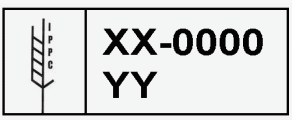
The stamp
Wood Packaging must be marked at least on 2 visible sides of the article with the International Plant Protection Convention (IPPC) logo. In addition, the stamp must contain the 2 letters ISO code of the country that treated the wood packaging.
7.SPECIAL CARGO
Cables Reels & Spools
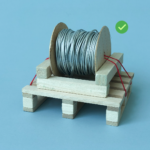

Firstly, make sure you pack it on a pallet, and you can stack articles on the top. Secondly, brace the goods with wooden blocking. Also, secure with 2 metal or unbreakable plastic straps on each side.
Carpet or textile rolls
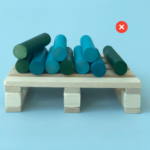

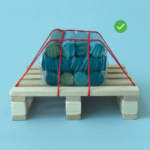

First, roll the textile along the shortest length around a cardboard tube. Secondly, place the rolls in a thick plastic bag, or box the rolls in a double-wall corrugated box suitable for stacking. You can consider packing it inside a crate with a forklift-able base. If stacking multiple rolls on a pallet, it should follow an alternating stacking pattern. Most importantly, add 2 straps on each side with unbreakable plastic straps and shrink wrap.
Drums
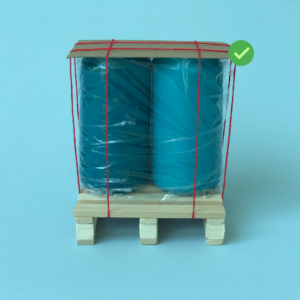

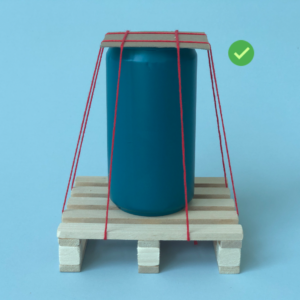

Ship the drums on a hardwood pallet. The gap between the drums should be less than 2 cm (1 inch). Most importantly, place a fibreboard or skid on the top and horizontally in between the drums to prevent movement and damages. Besides, secure using 2 metal straps on each side or unbreakable straps.
Engines and vehicle parts
Brace to the pallet and drain from liquids. Most importantly, if a part does not squarely fit onto the pallet, then you should crate it.



Industrial equipments
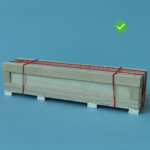

Crate or secure on a pallet with wooden blocking. Most importantly, add 2 metal or unbreakable straps on each side.
Large electronic items
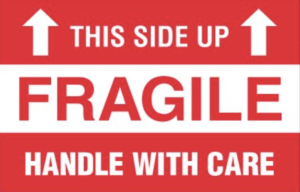

You should ensure to have empty space within the box. If the package does not have double walls, overpack the item in a double-walled cardboard box. Most importantly, for multiple items, secure with 2 unbreakable plastic straps on each side onto a fumigated wooden pallet and shrink wrap.
Long tubes and pipes
Must be boxed for light tubes, crated or end cap for large tubes. To clarify, only banding tubes on a pallet is not acceptable.
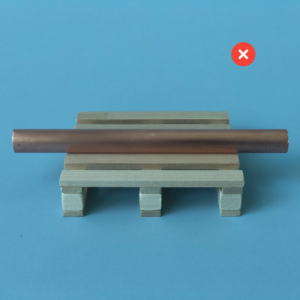

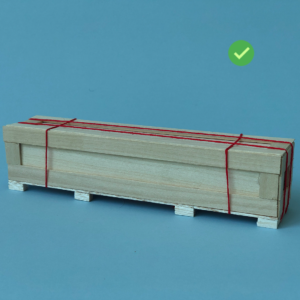

Motorcycle
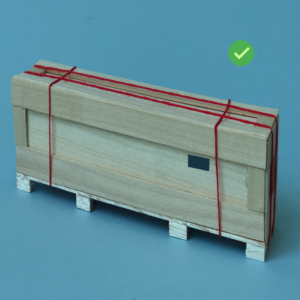

Brace on a pallet with cardboard around or crate it. Make a hole to have the VIN number visible. Most importantly, drain the gas tank or run down to a quarter (or eighth full).
Panel glasses
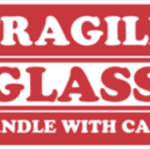

Must be placed stand-up surrounded with styrofoam and pack in a wooden crate. As a result, you will ensure protection from torsional forces. Also, place glass special handling labels on each side of the box.
Sack
Add solid bottom and top cushioning protector corrugated pad tray. As a result, It will avoid puncture. Most importantly, use the interlock stacking method to help against product shifting. Make sure that the bags stay inside the pallet perimeter. Cushion the outside of the bags with cardboard when possible. After that, add 2 straps on each side and shrink wrap.
Sport equipment & musical instruments



Must be shipped in hard cases. To protect against marking, place the hard box in a cardboard outer box with several layers of cell bubble wrap. Most importantly, fill up empty space to avoid items to shift during handling.
Temperature control or temperature and light sensitive
If your shipment requires a special temperature, to be kept in the shade, protection from direct sunlight. Let us know so we can make sure storage and transportation are compliant with the product requirements. (may be subject to additional costs).
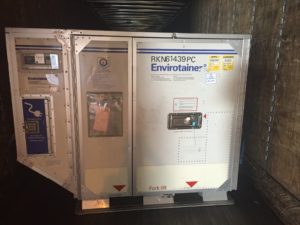

Transit cases & tools boxes on wheels



First, remove the wheels or use traditional blocking methods to prevent movement on the skid. If the wheels are not removed, the pallet desk must be solid. It’s important to avoid the wheel from falling through the slats and being damaged by the forklift. After that, add 2 straps on each side with unbreakable plastic straps and shrink wrapped.
Tires
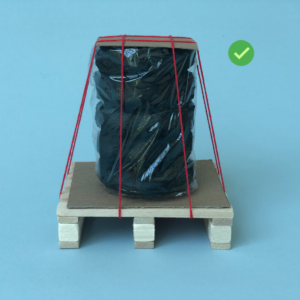

Must be shrink-wrapped and secured using 2 metal or unbreakable plastic banding on each side. Most importantly, place the cardboard on the top of the tire wall to prevent damages and movement.
Vehicles
Vehicle inspection
Inspect your car before shipping (wash your car). Firstly, make a record of any dents, scratches, or other cosmetic damage. Secondly, take pictures of your car from several angles as well as close shots.
Personal Items
Remove customs products and personal items; DVD players, GPS system, Toll tags, and parking access passes, customs stereo systems. Vehicles are usually shipped unlocked.
Vehicle instructions
You can provide instructions about starting and stopping the vehicle. Also, turn off or disable the alarm system. Most importantly, provide a set of keys.
Gas tank
The gas tank must be run down to a quarter or eighth full.
Maintenance check
The car should be in good driving conditions. But, inoperable vehicles could be shipped as well with special preparation. For Example, perform a maintenance check before shipping your vehicle. Therefore, you can avoid unforeseen delays due to mechanical issues. Above all, make sure the battery has a full charge and the tires are properly inflated. Keep an eye on the vehicle a week before shipping so you can detect any leak.
Vehicle lien
There must be no lien on the vehicle. (If there’s a lien, you must provide to the freight forwarder a notarized lien holder authorization to export the vehicle). Sometimes the customs requires 2 to 3 days to approve the transportation. Make sure you deliver the vehicle with enough free time in advance.
Delivery before departure
Sometimes the customs requires 2 to 3 days to approve the transportation. Make sure you deliver the vehicle with enough free time in advance.
8.DANGEROUS GOODS
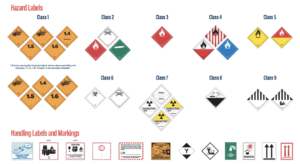

As a shipper, the regulation requires you to properly classify, mark, label, and pack the package to identify the hazard.
For example, Lithium battery-powered devices, aerosols, oxygen cylinders, flammable liquids such as perfumes products, alcoholic beverages, special paint, etc.
That is to say, check if you have a Manufacturer Safety Data Sheet (MSDS) and look into the transportation section 14.
In short
If you think your shipment contains hazardous material, you can ask your freight forwarder for guidance. Also, you can check the faa website for further information.
In conclusion, keep in mind that you can save money on shipping by reducing the volume of your items. However, make sure that your packing is suitable for transportation. Furthermore, think about how eco-friendly your shipping is. If you have a doubt, always consult a packing specialist or ask our team of experts.

